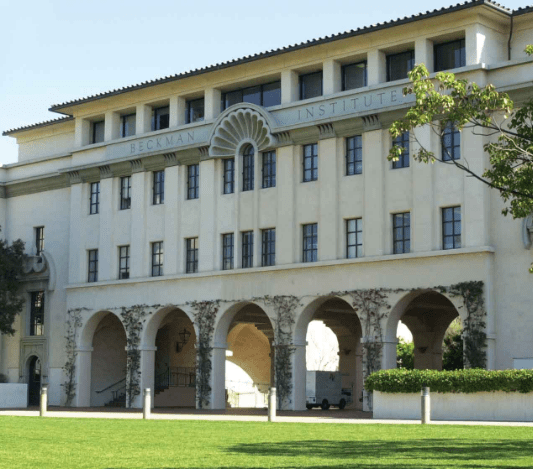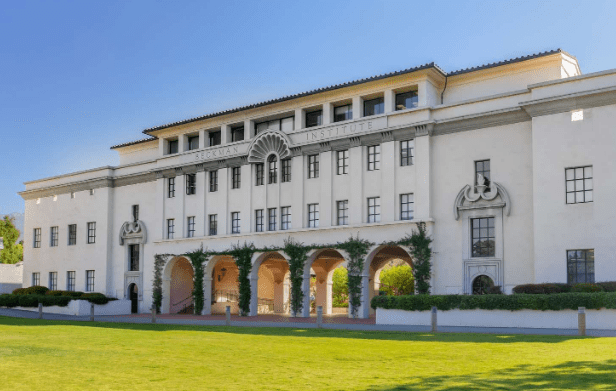The California Institute of Technology (Caltech) is one of the most prestigious and influential institutions of higher learning in the world, renowned for its rigorous academic programs, pioneering research, and extraordinary contributions to science and engineering. Located in Pasadena, California, Caltech is a small, private research university with an outsized impact on the global scientific community. Its alumni and faculty include some of the most brilliant minds in modern history, many of whom have made groundbreaking discoveries that have shaped our understanding of the universe and advanced human knowledge in profound ways.
Historical Background
Founding and Early Years
Caltech was founded in 1891 as Throop University by Amos G. Throop, a local businessman and philanthropist who was inspired by the desire to establish a world-class technical school on the West Coast. Originally, Throop University was a coeducational preparatory and vocational school. However, its mission began to evolve after astronomer George Ellery Hale, who later became a key figure in the institution’s development, joined the board of trustees in 1907.
In 1910, the institution was renamed Throop Polytechnic Institute, reflecting its growing emphasis on science and engineering. Hale, along with chemist Arthur Amos Noyes and physicist Robert Andrews Millikan, were instrumental in transforming Throop into a research-oriented institution. By 1920, Throop had evolved into a college focused on pure and applied sciences, and in 1920, it was renamed the California Institute of Technology to reflect its new mission and identity.
Development as a Leading Research Institution
Under the leadership of Robert A. Millikan, who became Caltech’s first executive head in 1921, the Institute rapidly gained recognition as a premier center for scientific research. Millikan, who won the Nobel Prize in Physics in 1923 for his work on the elementary charge of electricity, was a driving force behind Caltech’s rise to prominence. He attracted top scientists and engineers to join the faculty, established strong connections with industry and government, and secured funding for the construction of new laboratories and facilities.
During the 1920s and 1930s, Caltech made significant strides in various fields of science and technology. The establishment of the Seismological Laboratory in 1921, the founding of the Guggenheim Aeronautical Laboratory in 1926, and the creation of the Jet Propulsion Laboratory (JPL) in 1936 all marked major milestones in Caltech’s development as a world-leading research institution.
Academic Excellence
Schools and Divisions
Caltech is organized into six academic divisions, each specializing in specific areas of science and engineering:
- Division of Biology and Biological Engineering (BBE): This division focuses on understanding the fundamental processes of life, from molecular and cellular biology to systems biology and bioengineering. Research in this division addresses critical issues in health, disease, and the environment.
- Division of Chemistry and Chemical Engineering (CCE): The CCE division is known for its pioneering work in chemical synthesis, molecular engineering, and materials science. It plays a central role in advancing knowledge in chemistry and chemical engineering, with applications in energy, medicine, and environmental sustainability.
- Division of Engineering and Applied Science (EAS): EAS is a hub for research and education in a wide range of engineering disciplines, including aerospace, mechanical, electrical, and computer engineering. The division is also home to interdisciplinary programs in areas such as robotics, nanotechnology, and quantum computing.
- Division of Geological and Planetary Sciences (GPS): This division is a global leader in the study of Earth and planetary systems. It encompasses research in geophysics, geochemistry, planetary science, and environmental science, contributing to our understanding of the Earth, its history, and the broader solar system.
- Division of Humanities and Social Sciences (HSS): HSS offers programs in economics, political science, history, philosophy, and other disciplines that explore the human dimensions of science and technology. The division emphasizes the importance of integrating scientific knowledge with social and ethical considerations.
- Division of Physics, Mathematics, and Astronomy (PMA): PMA is at the forefront of research in fundamental physics, mathematics, and astronomy. The division is home to several Nobel laureates and is known for its contributions to theoretical physics, quantum mechanics, cosmology, and astrophysics.

Interdisciplinary Research and Education
Caltech’s small size and collaborative culture foster interdisciplinary research and education. The Institute encourages faculty and students to work across traditional disciplinary boundaries, leading to innovative solutions to complex scientific and technological challenges.
One notable example of Caltech’s interdisciplinary approach is the Kavli Nanoscience Institute, which brings together researchers from chemistry, physics, biology, and engineering to explore the properties and applications of nanomaterials. Another example is the Resnick Sustainability Institute, which focuses on developing sustainable energy technologies and addressing global environmental challenges through collaboration between scientists, engineers, and policymakers.
Caltech’s emphasis on hands-on learning and research is reflected in its undergraduate curriculum. Students are encouraged to engage in research projects from their first year, working closely with faculty members on cutting-edge research. This approach not only provides students with valuable experience but also contributes to the Institute’s overall research output.
Research and Innovation
Caltech’s commitment to research excellence is evident in its state-of-the-art facilities and the groundbreaking work conducted by its faculty and students. The Institute operates numerous research centers and laboratories that are at the cutting edge of science and engineering.
The Jet Propulsion Laboratory (JPL), which Caltech manages on behalf of NASA, is one of the most prominent research facilities associated with the Institute. JPL is responsible for some of the most important space exploration missions in history, including the Mars rovers, Voyager spacecraft, and the Cassini-Huygens mission to Saturn. JPL’s work in planetary science, astrophysics, and space technology has significantly advanced our understanding of the solar system and the universe.
Caltech is also home to the LIGO (Laser Interferometer Gravitational-Wave Observatory) Laboratory, where the first direct detection of gravitational waves was made in 2015. This groundbreaking discovery, which confirmed a key prediction of Einstein’s theory of general relativity, opened a new window into the study of the universe and earned the LIGO team the 2017 Nobel Prize in Physics.
In addition to these large-scale research efforts, Caltech researchers are engaged in a wide range of projects that push the boundaries of knowledge in fields such as quantum computing, biotechnology, and environmental science. The Institute’s emphasis on curiosity-driven research and its willingness to tackle high-risk, high-reward projects have led to numerous breakthroughs that have had a lasting impact on science and technology.
Notable Alumni and Faculty
Caltech’s influence on science and technology is reflected in the achievements of its alumni and faculty. The Institute has produced a remarkable number of Nobel laureates, National Medal of Science recipients, and other distinguished scientists and engineers who have made significant contributions to their fields.
Some of the most notable Caltech alumni and faculty include:
- Richard Feynman: A theoretical physicist known for his work in quantum mechanics, quantum electrodynamics, and particle physics. Feynman was awarded the Nobel Prize in Physics in 1965 for his contributions to the development of quantum electrodynamics.
- Linus Pauling: A chemist and peace activist who is one of the few individuals to have won two Nobel Prizes. Pauling was awarded the Nobel Prize in Chemistry in 1954 for his research on the nature of the chemical bond and the Nobel Peace Prize in 1962 for his work in promoting nuclear disarmament.
- Murray Gell-Mann: A physicist who received the Nobel Prize in Physics in 1969 for his work on the theory of elementary particles, including the discovery of quarks.
- Kip Thorne: A theoretical physicist and one of the founders of LIGO. Thorne’s work on gravitational waves and black holes earned him the Nobel Prize in Physics in 2017.
- Frances Arnold: A chemical engineer who received the Nobel Prize in Chemistry in 2018 for her pioneering work in the directed evolution of enzymes.
Campus and Culture
The Caltech Campus
Caltech’s campus, located in the picturesque city of Pasadena, is known for its beautiful architecture, lush gardens, and historic buildings. The campus spans approximately 124 acres and features a mix of Mediterranean Revival and modernist architectural styles.
One of the most iconic buildings on campus is the Beckman Institute, named after Arnold O. Beckman, a Caltech alumnus and philanthropist who invented the pH meter. The Beckman Institute is a hub for interdisciplinary research in chemistry, biology, and engineering, and its distinctive architecture makes it a central landmark on campus.
The Millikan Library, named after Robert A. Millikan, is another notable building on campus. As the tallest building on the Caltech campus, the library is a prominent feature of the Pasadena skyline and serves as a symbol of Caltech’s commitment to knowledge and discovery.
In addition to its academic and research facilities, the Caltech campus is home to several cultural and recreational amenities, including the Athenaeum, a historic social club and dining facility, and the Caltech Theater, which hosts performances, lectures, and other events. The campus also features the Donald E. Baxter, M.D., Hall of the Humanities and Social Sciences, which houses the Division of Humanities and Social Sciences.
Student Life and Extracurricular Activities
Despite its small size, Caltech has a vibrant and close-knit student community. The Institute enrolls approximately 1,000 undergraduates and 1,300 graduate students, making it one of the smallest research universities in the world. This small size fosters a strong sense of community and allows for close interactions between students and faculty.
Caltech students are known for their intellectual curiosity, creativity, and passion for science and technology. The academic environment is rigorous and challenging, but students support each other and collaborate on problem-solving and research projects. The Honor Code, which emphasizes trust, integrity, and personal responsibility, is a cornerstone of Caltech’s student culture and governs academic and social conduct.
Extracurricular activities play an important role in student life at Caltech. The Institute offers a wide range of clubs and organizations, including academic and professional societies, cultural and affinity groups, recreational and sports clubs, and artistic and creative organizations. Some of the most popular student organizations include the Caltech Y, which promotes community service and social justice, and the Caltech Undergraduate Research Journal, which provides students with opportunities to publish their research.
Caltech also has a strong tradition of pranks, known as “Ditch Day,” where seniors create elaborate puzzles and challenges for underclassmen to solve. Ditch Day is a highly anticipated event and reflects the playful and creative spirit of the Caltech student body.
Athletics and Sports
Caltech may be best known for its academic achievements, but it also has a proud history in athletics. The Institute competes in NCAA Division III and is a member of the Southern California Intercollegiate Athletic Conference (SCIAC). Caltech fields varsity teams in a variety of sports, including basketball, soccer, tennis, swimming, and track and field.
One of the most notable moments in Caltech’s athletic history occurred in 2011 when the men’s basketball team ended a 26-year conference losing streak with a victory over Occidental College. The win was celebrated as a testament to the perseverance and determination of Caltech’s student-athletes.
In addition to varsity sports, Caltech offers a range of intramural and club sports, as well as fitness and wellness programs. The Braun Athletic Center provides students with access to state-of-the-art fitness facilities, including a gymnasium, swimming pool, and tennis courts.
Contributions to Science, Technology, and Society
Scientific Discoveries and Innovations
Caltech’s contributions to science and technology are numerous and have had a profound impact on the world. The Institute has been at the forefront of many of the most important scientific discoveries of the past century, and its research has led to new technologies, medical treatments, and a deeper understanding of the universe.
One of the most significant contributions is in the field of astrophysics. Caltech astronomers and physicists have played a leading role in the development of observational astronomy, from the construction of the Palomar Observatory to the operation of the Keck Observatory in Hawaii. The discovery of dark energy, the characterization of exoplanets, and the study of black holes and gravitational waves are just a few of the groundbreaking achievements made by Caltech researchers.
In the field of chemistry, Caltech has made significant advances in molecular biology, chemical synthesis, and materials science. The development of directed evolution, a technique that mimics natural selection to engineer new proteins and enzymes, has revolutionized biotechnology and earned Frances Arnold the Nobel Prize in Chemistry.
Caltech’s contributions to engineering and technology are equally impressive. The development of the first operational jet engine in the United States, the invention of the pH meter, and the creation of the first artificial limb controlled by brain signals are just a few examples of the Institute’s impact on engineering and applied science.
Entrepreneurship and Industry Impact
Caltech’s emphasis on innovation and entrepreneurship has led to the creation of numerous successful startups and spin-off companies. The Institute has a strong entrepreneurial culture, and many of its faculty, students, and alumni have founded companies that have had a significant impact on industries ranging from biotechnology to aerospace.
One of the most notable examples is the founding of AeroVironment, a company that specializes in unmanned aerial vehicles (UAVs) and electric vehicle charging systems. AeroVironment was founded by Caltech alumnus Paul MacCready, who is known for designing the Gossamer Condor, the first human-powered aircraft to complete a sustained flight.
Another example is the creation of SpaceX, a private aerospace company founded by Elon Musk, who was inspired by the work of Caltech professors and researchers in the field of space exploration. SpaceX has become a leader in commercial spaceflight and has achieved numerous milestones, including the first privately-funded spacecraft to reach orbit and dock with the International Space Station.
Caltech’s Office of Technology Transfer and Corporate Partnerships supports the commercialization of research and the development of new technologies. The office helps faculty and students bring their inventions to market by providing resources for patenting, licensing, and startup formation.
Global Impact
Caltech’s influence extends far beyond the borders of the United States. The Institute’s research and educational programs have a global reach, and its faculty and alumni are leaders in international scientific collaborations and policy initiatives.
Caltech researchers are actively involved in addressing global challenges such as climate change, energy sustainability, and public health. The Resnick Sustainability Institute, for example, focuses on developing innovative solutions to environmental problems through interdisciplinary research in areas such as solar energy, water resources, and carbon capture.
Caltech’s commitment to global impact is also reflected in its partnerships with institutions around the world. The Institute collaborates with universities, research organizations, and governments in countries such as China, India, and the United Kingdom to advance scientific knowledge and address global issues.

Nobel Laureates and Other Honors
Caltech’s faculty and alumni have been recognized with numerous prestigious awards, including Nobel Prizes, Fields Medals, Turing Awards, and National Medals of Science. As of 2023, Caltech-affiliated individuals have won over 70 Nobel Prizes, making the Institute one of the most honored academic institutions in the world.
Some of the most notable Nobel laureates associated with Caltech include:
- Robert A. Millikan: Awarded the Nobel Prize in Physics in 1923 for his work on the elementary charge of electricity.
- Linus Pauling: Awarded the Nobel Prize in Chemistry in 1954 and the Nobel Peace Prize in 1962.
- Richard Feynman: Awarded the Nobel Prize in Physics in 1965 for his work in quantum electrodynamics.
- Kip Thorne: Awarded the Nobel Prize in Physics in 2017 for his contributions to the detection of gravitational waves.
Conclusion
The California Institute of Technology (Caltech) is a world-renowned institution that has made extraordinary contributions to science, technology, and society. From its early beginnings as a small technical school to its current status as a global leader in research and education, Caltech has consistently pushed the boundaries of knowledge and innovation.
Caltech’s small size, interdisciplinary approach, and emphasis on hands-on research have created an environment where creativity and discovery flourish. The Institute’s faculty, students, and alumni have made groundbreaking discoveries, developed new technologies, and founded successful companies that have transformed industries and improved lives.
As Caltech continues to explore the frontiers of science and engineering, it remains committed to its mission of advancing knowledge, solving global challenges, and educating the next generation of leaders in science and technology. With its unwavering dedication to excellence and innovation, Caltech will undoubtedly continue to shape the future of science and technology for generations to come.
This article provides an in-depth overview of Caltech’s history, academic structure, research contributions, and its impact on the global scientific community. It is intended to offer readers a comprehensive understanding of what makes Caltech a unique and influential institution.




